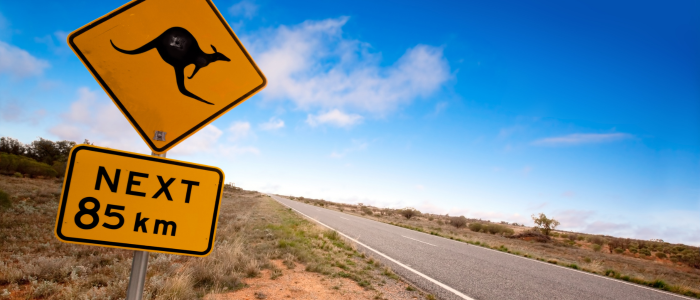For New Zealanders moving to or visiting Australia, understanding the local driving laws, licence requirements, and road conditions is essential for a smooth transition. While driving in Australia shares many similarities with New Zealand, key differences in road rules, licensing, and penalties can impact Kiwi drivers. This guide covers everything you need to know about driving in Australia as a New Zealander.
Can New Zealanders Drive in Australia?
Yes, New Zealanders can drive in Australia with their NZ driver’s licence, but the conditions vary depending on the length of stay and the state or territory you are in. Generally:
- Short-term visitors can use their full, valid New Zealand licence without the need for an Australian licence.
- Permanent residents or long-term stayers (typically after three to six months) may be required to transfer to an Australian licence, depending on state regulations.
Most states and territories allow Kiwis to convert their NZ licence to an Australian licence without taking a driving test. However, the process and time limits differ, so checking the specific requirements of your new state is crucial.
State-by-State Licence Conversion Rules
Each Australian state has slightly different rules regarding licence conversion and driving on an overseas licence. Here’s a breakdown of major states:
- New South Wales (NSW): Kiwis can drive on their NZ licence for up to three months before needing to convert it to an NSW licence.
- Victoria (VIC): You must transfer to a Victorian licence within six months of arrival.
- Queensland (QLD): If staying longer than three months, you must obtain a Queensland licence.
- Western Australia (WA): You can drive indefinitely on a valid NZ licence unless you become a permanent resident, at which point you have three months to transfer your licence.
- South Australia (SA), Tasmania (TAS), Australian Capital Territory (ACT), and Northern Territory (NT): Rules vary, but in most cases, you’ll need to transfer your licence within three to six months of settling. Always check with the local transport authority for specific requirements.
Key Differences Between NZ and Australian Road Rules
While driving in Australia is similar to New Zealand (such as driving on the left-hand side), there are some key differences that can catch Kiwis off guard:
Speed Limits
Speed limits vary by state and are more strictly enforced in Australia than in New Zealand. Common speed limits include:
- School zones: Usually 40 km/h, with strict enforcement during school hours.
- Urban areas: Generally, 50 km/h in residential streets.
- Highways and motorways: Typically between 100–110 km/h, but some areas (e.g., Northern Territory) allow up to 130 km/h.
Speed cameras are widely used, and fines can be significant, so always be mindful of posted speed limits.
Alcohol and Drug Driving Laws
Australia has strict drink-driving laws, with most states enforcing a 0.05% blood alcohol limit for fully licensed drivers. Learners and probationary drivers are generally subject to a zero-alcohol limit. Random breath tests (RBTs) are common, and penalties for drink driving are severe, including heavy fines, licence disqualification, and even imprisonment.
Seat Belt and Child Restraint Laws
Seat belts are compulsory for all passengers, and Australia has stricter child restraint laws than New Zealand. Infants and children up to seven years old must use an approved child car seat or booster seat.
Roundabout Rules
Roundabout rules differ slightly from New Zealand:
- In Australia, you must give way to all vehicles already on the roundabout.
- Signaling rules differ when exiting – always check local regulations.
Mobile Phone Use
Using a handheld mobile phone while driving is illegal across Australia, with strict enforcement and heavy fines. Hands-free devices are permitted but must be used responsibly.
Toll Roads and Electronic Tagging
Unlike New Zealand, many Australian cities (such as Sydney, Melbourne, and Brisbane) have toll roads. Most tolls are electronic, meaning there are no cash booths. To avoid fines, you should:
- Set up an electronic toll account (e.g., E-TAG, Linkt, or EastLink) for automatic payments.
- Use the Linkt website to check toll charges and payment options.
Visitors can purchase short-term toll passes if they are driving a rental car or using their NZ-registered vehicle temporarily.
Driving in Remote Areas and Wildlife Hazards
For Kiwis used to New Zealand’s conditions, driving in regional and remote Australia presents unique challenges:
- Extreme heat: Long-distance travel in the Outback requires careful planning. Carry water, fuel, and emergency supplies.
- Wildlife risks: Kangaroos and other animals are common hazards, particularly at dawn and dusk. Slow down in wildlife-prone areas.
- Unsealed roads: Some rural roads may require 4WD vehicles; always check road conditions before travelling.
Car Insurance and Roadside Assistance
In Australia, car insurance requirements differ from New Zealand. While the Accident Compensation Corporation (ACC) covers personal injuries in New Zealand, Australia mandates Compulsory Third Party (CTP) insurance, which covers injury-related costs for third parties in an accident. However, CTP does not cover vehicle damage, so additional insurance is highly recommended:
- Third-Party Property Insurance – Covers damage to other vehicles or property but not your own.
- Comprehensive Insurance – Covers damage to both your own car and others, as well as theft, fire, and natural disasters.
For roadside assistance, various state-based organisations provide breakdown support, towing, and emergency services:
- NRMA – New South Wales (NSW) & Australian Capital Territory (ACT)
- RACV – Victoria (VIC)
- RACQ – Queensland (QLD)
- RAA – South Australia (SA)
- RAC – Western Australia (WA)
- RACT – Tasmania (TAS)
- AANT – Northern Territory (NT)
Membership with these providers ensures access to 24/7 roadside support, including battery replacements, fuel delivery, and emergency towing services.
Buying or Registering a Car in Australia
If you plan to buy a car in Australia, consider:
- Stamp duty and registration fees, which vary by state.
- Vehicle safety inspections, required in some states before registering a used car.
- Transferring NZ licence plates – If importing a car from New Zealand, it must meet Australian Design Rules (ADR) standards.
For more information, check the relevant state’s transport authority website.
Final Take
Driving in Australia as a New Zealander is relatively straightforward, but understanding state-specific licence conversion rules, road laws, and toll systems is crucial for a hassle-free experience.
By staying informed, ensuring compliance with local regulations, and taking necessary precautions (such as securing proper insurance and roadside assistance), Kiwi drivers can confidently navigate Australian roads. Always check for the latest updates on driving laws and requirements through state transport websites and official government resources.


